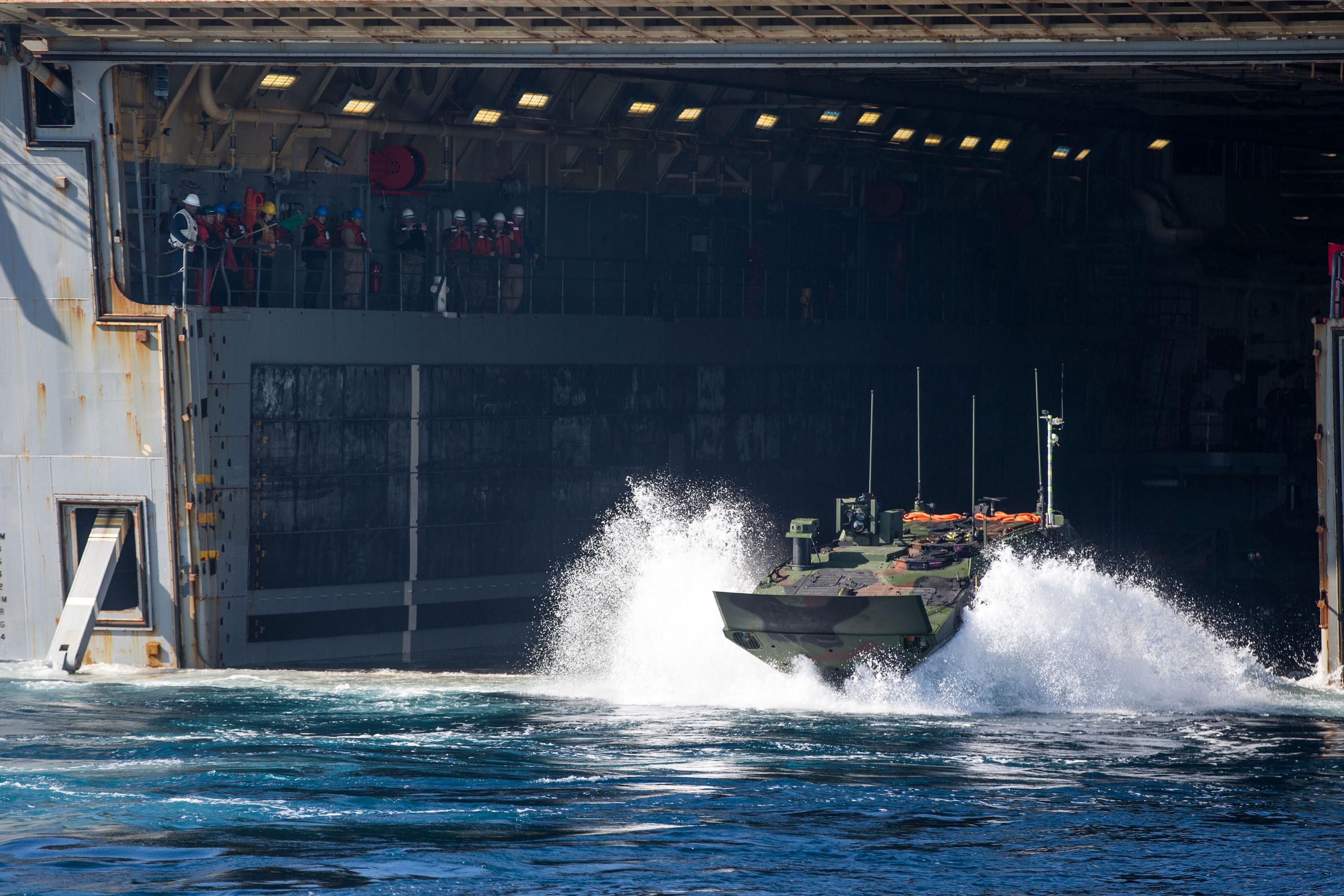
Marine Corps modernization officials said Tuesday that the service has completed testing of its new amphibious combat vehicle, or ACV, and will begin fielding the replacement to the older amphibious assault vehicle next month, ahead of schedule.
The Marine Corps' Program Executive Office Land Systems has completed the Initial Operational Test & Evaluation phase of the ACV and will begin fielding first 18 to a platoon stationed at the Marine Corps Air Ground Combat Center at 29 Palms, California, John Garner, head of PEO LS, told defense reporters at Modern Day Marine 2020.
"The ACV's status is frankly good; we have completed the IOT&E, and we will begin early deployment fielding essentially next week," Garner said. "We anticipate that that fielding will be complete sometime in October. And we are preparing for, and believe we are in a very good position for, a full-rate production decision at the end of November."
Read Next: Marines' 1st-Ever Littoral Regiment Will Include Combat, Logistics and Anti-Air Personnel
The announcement comes after an AAV sank in late July off the coast of California, claiming the lives of eight Marines and one sailor. As a result, the Marine Corps has suspended waterborne operations for its fleet of 800 AAVs.
While Garner did not mention the AAV accident, retired Col. William Preston McLaughlin, who commanded a Marine assault amphibian battalion, said in July that the accident highlights the need for the Marines to field the ACV as a replacement for the 1970s-era AAV.
In 2018, the Corps selected BAE Systems, along with teammate Iveco Defense Vehicles, to build a replacement for its aging AAV, which is also built by BAE.
The ACV is an advanced, eight-wheeled vehicle equipped with a new six-cylinder, 700-horsepower engine, which provides a significant power increase over the AAVs currently in service.
The Marines hope to go into full-rate production in the first quarter of fiscal 2021, Garner said.
The ACV program is currently in low-rate initial production (LRIP), but the initial fielding will still occur in October instead of November or December, he added.
"It could have even been later than that and still be within what we refer to as the program baseline," Garner said. "We are actually in the second year of LRIP, so we are building vehicles now, and those vehicles will continue to be fielded."
The Marine Corps intends to field another unit in southern California in the January-February timeframe, he said.
"We have a stream of vehicles coming off the production line right now so ... we are going to continue fielding a unit about every two-to-three months," Garner said. "This is only the start; we are going to continue at a fairly regular rate from this point onward."
-- Matthew Cox can be reached at matthew.cox@military.com.
Related: Marines Suspend All AAV Water Ops as Search for 8 Missing Troops Continues
Show Full Article© Copyright 2020 Military.com. All rights reserved. This material may not be published, broadcast, rewritten or redistributed.
tinyurlis.gdv.gdv.htu.nuclck.ruulvis.netshrtco.detny.im
مقالات مشابه
- اجازه دهید ماسکارپونه لوکس قارچ ماکارونی و خیلی بیشتر
- The Last Of Us 2 نشت: سونی می داند whodunnit اما نبود کار در داخل
- که در آن صورت حساب آب و برق بالاترین (و کمترین) در ایالات متحده
- شرکت صادرات و واردات کالاهای مختلف از جمله کاشی و سرامیک و ارائه دهنده خدمات ترانزیت و بارگیری دریایی و ریلی و ترخیص کالا برای کشورهای مختلف از جمله روسیه و کشورهای حوزه cis و سایر نقاط جهان - بازرگانی علی قانعی
- بهترین Touchless فوستس آشپزخانه برای خانه هوشمند
- بهترین موریانه درمان برای کنترل آفات
- تعاریف اسباب بازی
- اتوبار محدوده بلوار تعاون
- خانه قانونگذاران می خواهید به مکث نظامی نظام سلامت تعمیرات اساسی
- چگونه برای گفتن اگر یک آووکادو بد است